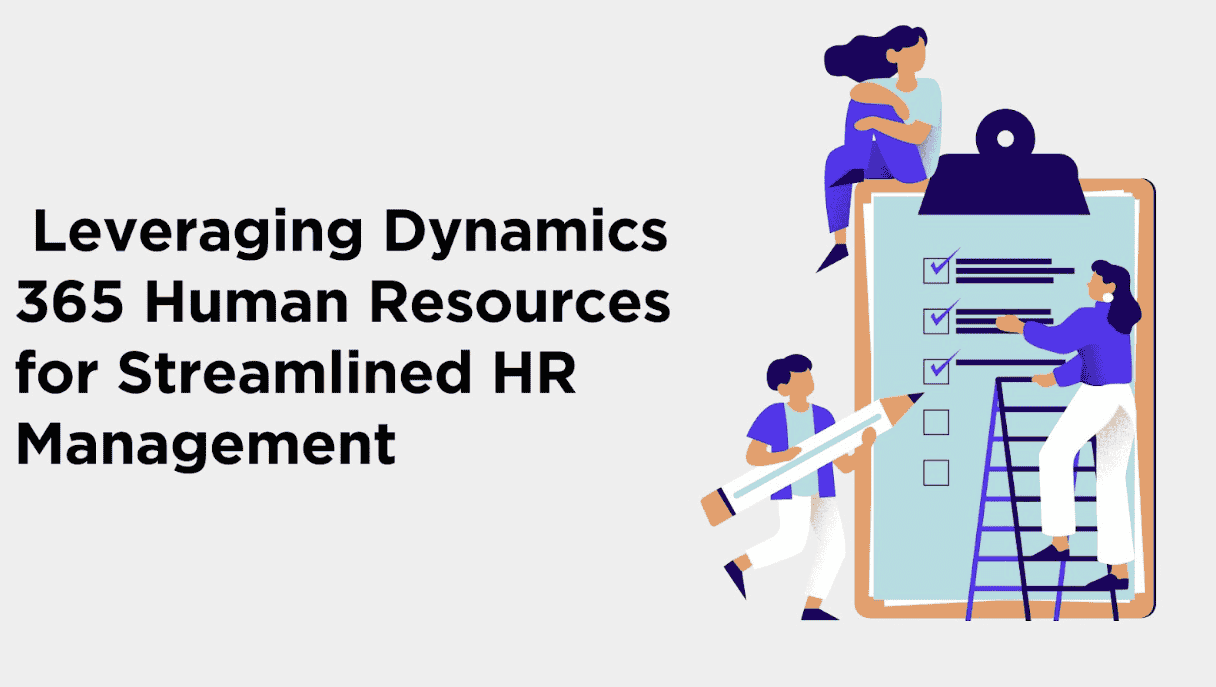Leveraging Dynamics 365 Human Resources for Streamlined HR Management
Within a fast-adjusting business world, human resource management (HRM) has become more essential for the success and growth of any organization. Over the years, the advances brought about by technology have imposed even more stringent requirements as predictably mindful businesses began using cloud-innovated advanced solutions for their HR. For instance, Dynamics 365 Human Resources- this is a perfect holistic solution providing brilliant features for making HR operations more efficient. After which, this article will talk about how Dynamics 365 human resource can reshape HR management and how businesses will use it further for greater efficiency and effectiveness.
What is Dynamics 365 Human Resources?
Dynamics 365 Human Resources is a cloud platform to support Microsoft customers to simplify their HR processes by digitizing the overall HR process within an organization. The solution has a data-driven approach to HR, providing machine learning and AI-enabled features to manage and optimize key HR processes, such as recruitment, talent management, performance tracking, and employee development.
Organizations can take advantage of Dynamics 365 Human Resources solution as an all-encompassing solution, cradling the employee from the point of hiring to that of retiring. It gives HR teams an intuitive and actionable insight along with automated workflows for saving time and reducing administrative workloads in managing employees.
Benefits of Using Dynamics 365 Human Resources
By adopting Dynamics 365 Human Resources, businesses can realize numerous benefits that enhance HR management processes and drive organizational success. Some key benefits include:
1- Improved Efficiency
One of the best benefits of Dynamics 365 is Automation of Improved Efficiency. Many routine HR tasks such as payroll processing, performance tracking, and employee record management have become easier and automated, leaving HR combines for strategic initiatives only. Thus, HR operations become very fast and efficient, with fewer errors.
2- Centralized Employee Data
Dynamics 365 gives businesses the opportunity to centralize all employee data into a single repository. Thereby avoiding the usage of different spreadsheets and disparate systems to give greater accessibility and management of employee records. Centralized data ensures consistency, improves teamwork, and increases decision-making capabilities.
3- Enhanced Employee Experience
It helps organizations create a nice employee experience through personalized development plans, self-service portals, and automating their onboarding. A smooth experience can create and retain a lot of employees.
4- Data-Driven Decision Making
A strong insight driving toolset of reports and analytics through Dynamics 365 gives capabilities to the HR team. With the reports, an HR can make a decision in alignment with business objectives. Be it performance, salary trends, or employee satisfaction: anything that is data-driven gets better results for that organization.
5- Scalability and Flexibility
Based on the growth of a business, there is an increase in human resources needs. Dynamics 365 Human Resources has the ability to scale, allowing the business to customize the system to higher employee numbers and changing business needs. Whether the business expands into new regions or starts opening new departments, changes can be made to shift with evolving demands.
Integration with Other Business Applications
Another significant advantage of Dynamics 365 Human Resources is the seamless integration with other Microsoft tools and business applications. The platform connects with Microsoft Teams, Microsoft Office 365, and other Dynamics 365 modules so that HR teams can collaborate across departments, streamline workflows and gain productivity.
For example, MS Teams integrations allow HR teams to facilitate virtual meetings, conduct interviews, and collaborate on projects in real time. Another integration with Microsoft Power BI supports visualization of HR data and generating tailored reports for stakeholders.
How Dynamics 365 Human Resources Benefits Businesses
Such as undertaken to derive Human Resources from Integrations by Dynamics. It is agile: Organizations tend to adapt quickly in the face of labor fluctuations-whether they are caused by external federal regulatory changes, market shifts or whether they are being felt within any organization-in-the-response phase between the traditional type of HR narrowed-fold and wholly centralized architecture. Organizations would be able to keep with the competitive hordes in record time as a result of much faster adjustments.
Cost savings Dynamics 365 Human Resources dedicated to saving time and managing costs to the business by automating repetitive tasks and increasing the efficiency of HR processes. Alongside, businesses also would be able to cut the administrative costs and minimize errors during operational efficiency.
New image attraction and retention A strong HR system guarantees that the organization is able to attract as well as keep talent pool and hence facilitate a good experience for latter-day employees in terms of the recruitment and onboarding process as well as experience given to employees while in the organization. Thus, this increases retention and reduces turnover.
Final note
Dynamics 365 Human Resources is an indispensable agent for improving all such organizations in making a notable difference in HR efficiencies and HR benefits. This online capability allows businesses to concentrate on those things that matter by lifting up the employee data across the organization and automating workflows-all while delivering actionable information-in the employ-cloud-office capacity. Whether a small business or a large entry, leveraging an enterprise application such as Dynamics 365 Human Resources would streamline HR management in achieving the organizational goals.
Therefore, if there is any arrangement made towards improving HR management, choosing Dynamics 365 Human Resources is a step towards the future of efficiency, data-oriented and employee-centric.









